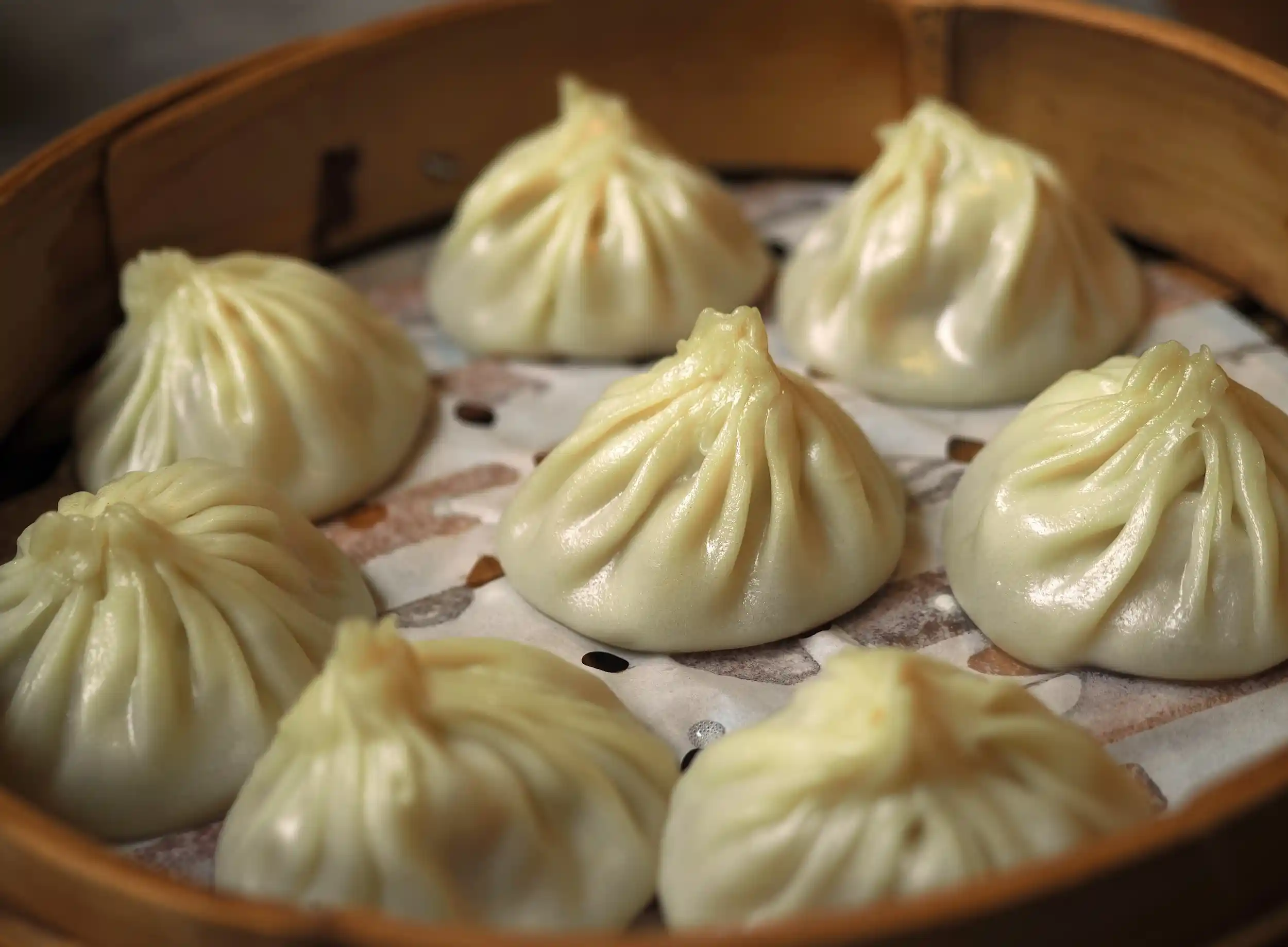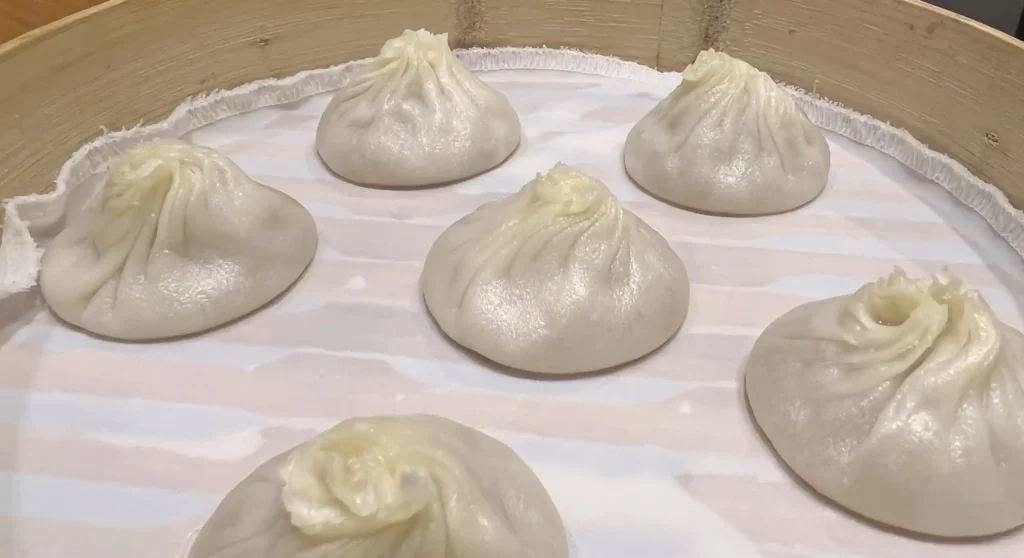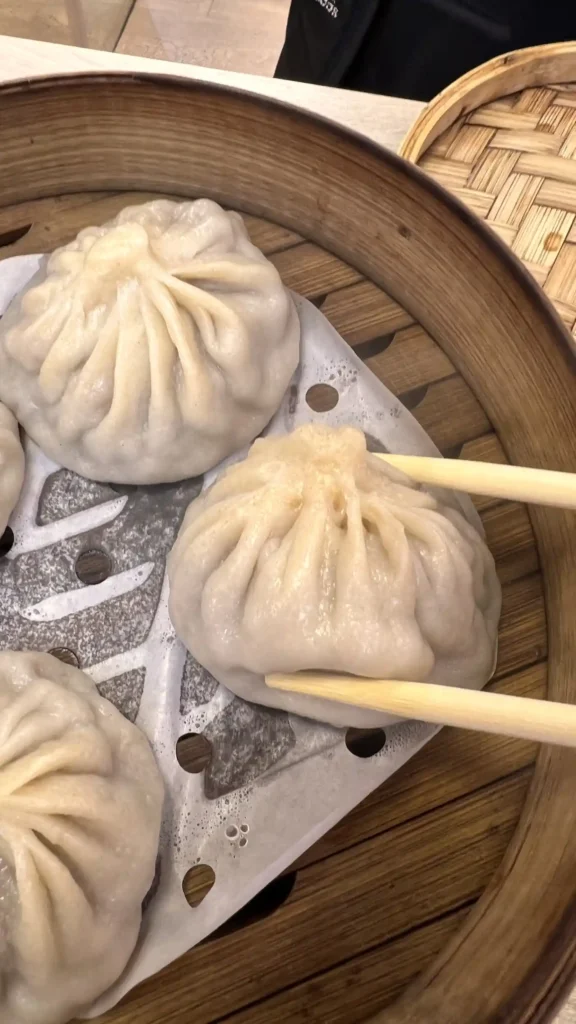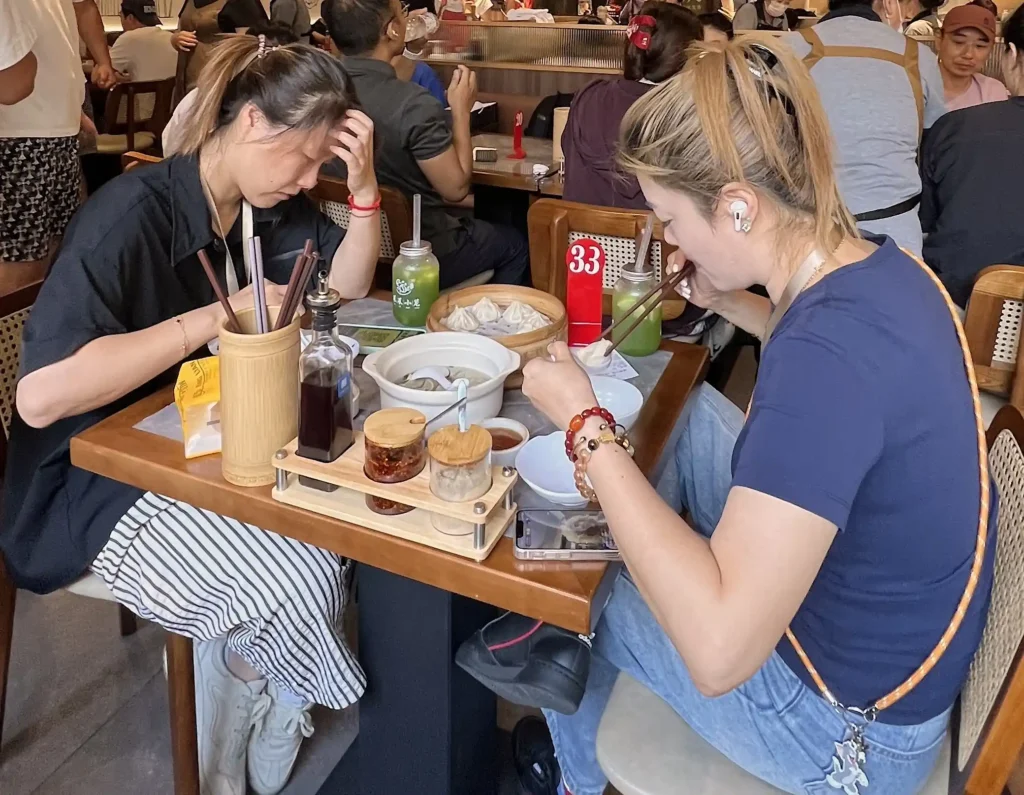
Xiaolongbao is one of the most recognisable and delicious dishes in Chinese cuisine. They consist of thin wheat dough filled with different ingredients and traditionally steamed in small bamboo baskets.
What is Xiaolongbao?
There are several characteristics that distinguish Xiaolongbao from other similar steamed dough dishes. With a delicate, very thin, almost transparent dough, the inside contains a delicious hot broth that causes an explosion of aromas and flavours on the palate.
The most popular filling for Xiaolongbao usually contains pork or crab, as well as a small amount of gelatine that melts when steamed, creating the broth inside.
It is said that the best Xiaolongbao should have 14 folds on top and the dough should be as thin as possible, just thick enough not to break when picked up.

Considered a protected national treasure since 2006, their origin dates back to the early 19th century and there are two theories about their appearance.
The most widely accepted theory cites Huang Mingxian, owner of the Ri Hua Xuan restaurant in Nanxiang, a district of Shanghai. It is said that back in 1870, he invented this type of dumpling or round bun made of extra-thin dough with gelatin inside, and it was a sensation.
In the beginning, they were sold under the name ‘Nanxiang large meat-filled buns,’ which left customers stunned when they saw the delicate and beautiful shapes of the lightly filled dough.
This dramatic effect caused a sensation and, combined with their incredible flavour, they quickly became popular in the city. However, the name did not catch on, and people began to call them xiao-long-bao, which literally means ‘small basket of buns’.
The second theory about the origin of Xiaolongbao, which has less support, involves Emperor Qianlong (1711-1799), who supposedly tasted this dish while travelling through Wuxi in Jiangsu province. As the emperor travelled along the river, he was nicknamed the Swimming Dragon. It is sometimes said that the word Long in xialongbao actually refers to the emperor’s nickname, as Long can mean both basket and dragon.
How to eat Xiaolongbao?
Xiaolongbao are usually served in the bamboo baskets in which they have been steamed. Their delicate, silky appearance is accompanied by an elegant sequence of steps to get the most pleasure out of every bite.
Xiaolongbao are eaten using a traditional Chinese spoon with a flat base and the ever-present chopsticks.
They are also usually accompanied by a small dish containing sauces for dipping the xiaolongbao. The most common liquid is dark rice vinegar, with the option of adding some chilli oil or soy sauce. It is also common to taste the vinegar with a little fresh ginger resting at the bottom of the dish.
The first step is to carefully remove the xiaolongbao from the basket in which it has been cooked. Its thin dough can sometimes be a little tricky, so we recommend taking care.

Once you have the xiaolongbao, place it on the spoon and take a small bite of the dough, then let the hot broth pour out onto the bottom of the spoon. This movement fills the air with aroma and lowers the temperature of the broth, which you can then sip from the spoon.
The next step is to taste the xiaolongbao, now without broth inside, bite by bite. Be careful not to burn yourself and dip it in the vinegar dish to taste.
Where to eat Xiaolongbao in Shanghai?
It is a ubiquitous dish in the city. You can find it on the menu of all local cuisine restaurants. One of the best known and oldest, with several restaurants throughout the city, is called Lailai xiaolong (莱莱小笼).

Its original restaurant has been awarded the Bib Gourmand distinction. You can find it at 506 Tianjin Road, Huangpu, Shanghai, China.
It also has other modern-style locations in the city’s commercial areas.
Contact us if you’re planning a trip to China and want to experience authentic Xiaolongbao and other local culinary delights.
Asiahop will design a tailor-made private itinerary combining the best places to taste this delicacy with the country’s top attractions.
Are you interested in the Chinese gastronomy? Read more about Chinese food from Asiahop